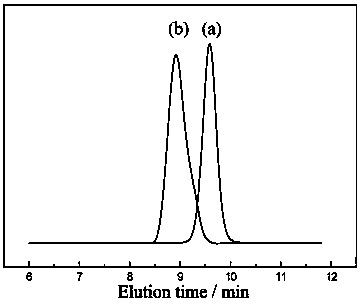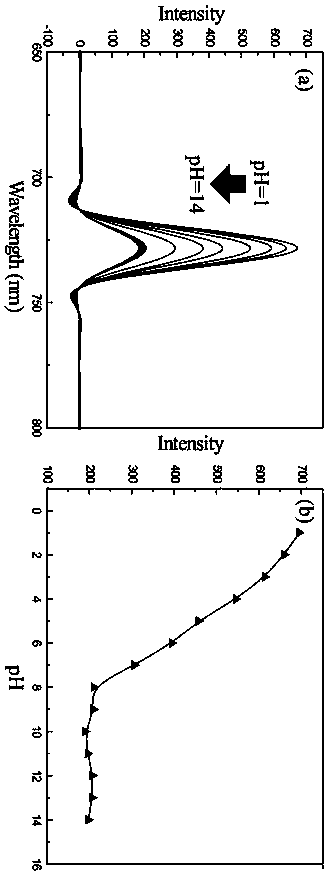pH fluorescence chemical sensor based on temperature-sensitive double hydrophilic block polymer, and synthesis method and application thereof
A block polymer, chemical sensor technology, applied in the field of chemical fluorescent materials, can solve the problems of easy breakage, difficult miniaturization, and high impedance
- Summary
- Abstract
- Description
- Claims
- Application Information
AI Technical Summary
Problems solved by technology
Method used
Image
Examples
Embodiment 1
[0052] Embodiment 1: PEG 113 -b-P(NIPAM-co-RhHHMa) 65 The preparation method comprises the following steps;
[0053] Step 1, preparation and characterization of the acidic recognition motif RhHHMa;
[0054] Add rhodamine B hydrazide (9.86g, 0.02mol) and p-hydroxybenzaldehyde (2.44g, 0.02mol) into (80.00mL), stir at 70.0°C for 1h, cool and crystallize to obtain the crude product, and The crude product was recrystallized 3 times in ethanol, and the product RhSA was a white solid (10.86g, yield: 88.0%);
[0055] RhSA (4.00g, 15.68mmol) and triethylamine (1.58g, 15.68mmol) were dissolved in dichloromethane (60.00mL), and methacryloyl chloride (1.62g, 15.68mmol) was added dropwise at 0.0°C, then Reflux reaction at 25.0°C for 4h, separate the organic layer, wash with saturated aqueous sodium carbonate solution 3 times, remove the solvent to obtain the crude product and recrystallize 3 times in acetonitrile, the product is a purple solid (6.86g, yield: 75.0%) .
[0056] 1 H NMR...
PUM
| Property | Measurement | Unit |
|---|---|---|
| Average molecular weight | aaaaa | aaaaa |
Abstract
Description
Claims
Application Information
 Login to View More
Login to View More - R&D
- Intellectual Property
- Life Sciences
- Materials
- Tech Scout
- Unparalleled Data Quality
- Higher Quality Content
- 60% Fewer Hallucinations
Browse by: Latest US Patents, China's latest patents, Technical Efficacy Thesaurus, Application Domain, Technology Topic, Popular Technical Reports.
© 2025 PatSnap. All rights reserved.Legal|Privacy policy|Modern Slavery Act Transparency Statement|Sitemap|About US| Contact US: help@patsnap.com



